These Ten-Year-Series (TYS) worked solutions with video explanations for 2021 A Level H2 Mathematics Paper 2 Question 10 are suggested by Mr Gan. For any comments or suggestions please contact us at support@timganmath.edu.sg.
2021 A Level H2 Math Paper 2 Question 10
In this question you should state the parameters of any normal distributions you use.
A company makes $3$-legged wooden stools from $4$ solid components – a seat in the form of a disc, and $3$ legs each in the form of a long, thin, cylinder. The seats and legs are bought in bulk from another company. Over a period of time it is found that the masses of the seats are normally distributed; $80\%$ of the seats have mass less than $2.1$ kg, and $15\%$ of the seats have mass less than $1.95$ kg.
(a)
Find the mean mass of the seats and show that the standard deviation is $0.0799$ kg, correct to $3$ significant figures.
[3]
(a) Find the mean mass of the seats and show that the standard deviation is $0.0799$ kg, correct to $3$ significant figures.
[3]
The masses of the legs, in kg, follow the distribution $\text{N}\left( 1.2,\text{ }{{0.02}^{2}} \right)$.
(b)
Find the expected number of legs with mass more than $1.21$ kg in a randomly chosen batch of $500$ legs.
[2]
(b) Find the expected number of legs with mass more than $1.21$ kg in a randomly chosen batch of $500$ legs.
[2]
(c)
Find the probability that the total mass of a randomly chosen seat and $3$ randomly chosen legs is between $5.6$ kg and $5.7$ kg.
[3]
(c) Find the probability that the total mass of a randomly chosen seat and $3$ randomly chosen legs is between $5.6$ kg and $5.7$ kg.
[3]
In order to make the stools, circular holes are drilled in the seats and the legs are fitted into them. In this process, the mass of seats is modelled as being reduced by $9\%$ and the masses of the legs are unchanged.
(d)
Find the probability that the total mass of a randomly chosen drilled seat and $3$ randomly chosen legs is less than $5.6$ kg.
[3]
(d) Find the probability that the total mass of a randomly chosen drilled seat and $3$ randomly chosen legs is less than $5.6$ kg.
[3]
The holes made in the seats have diameters, in mm, that follow the distribution $\text{N}\left( 31,\text{ }{{0.4}^{2}} \right)$ and the diameters of the legs, in mm, follow the distribution $\text{N}\left( 30.7,\text{ }{{0.3}^{2}} \right)$. If the diameter of a leg is greater than the diameter of a hole, then the leg has to be sanded down to make it fit. If the diameter of a hole is more than $0.8$ mm greater than the diameter of a leg, then padding has to be added when the leg is glued to the seat.
(e)
A stool is made of a randomly chosen drilled seat and $3$ randomly chosen legs. The legs are paired up with the holes at random. Find the probability that the $3$ legs can be fitted without the need for any sanding or padding.
[4]
(e) A stool is made of a randomly chosen drilled seat and $3$ randomly chosen legs. The legs are paired up with the holes at random. Find the probability that the $3$ legs can be fitted without the need for any sanding or padding.
[4]
Suggested Video Solutions
Suggested Handwritten Solutions
- (a)
- (b)
- (c)
- (d)
- (e)
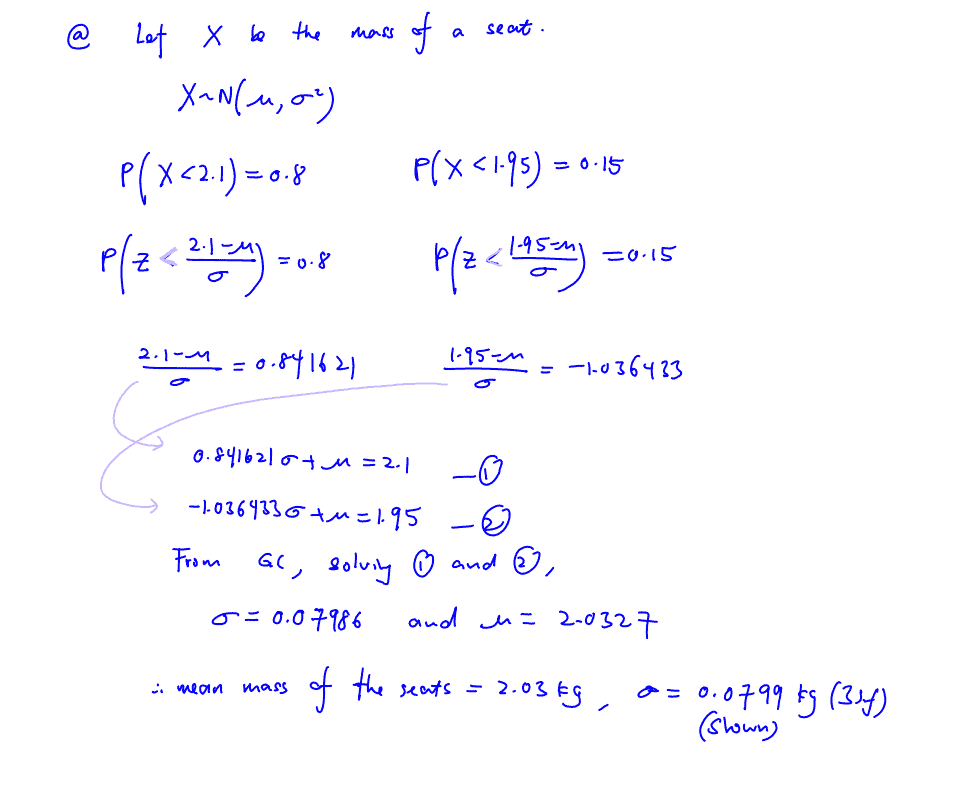
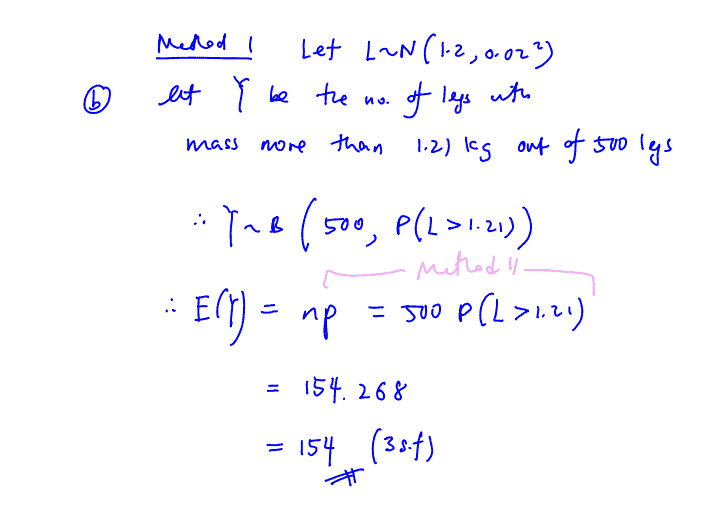
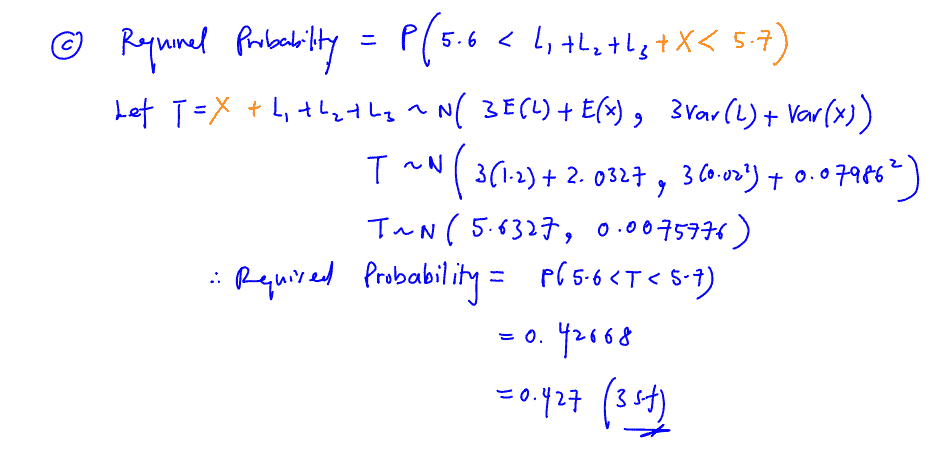
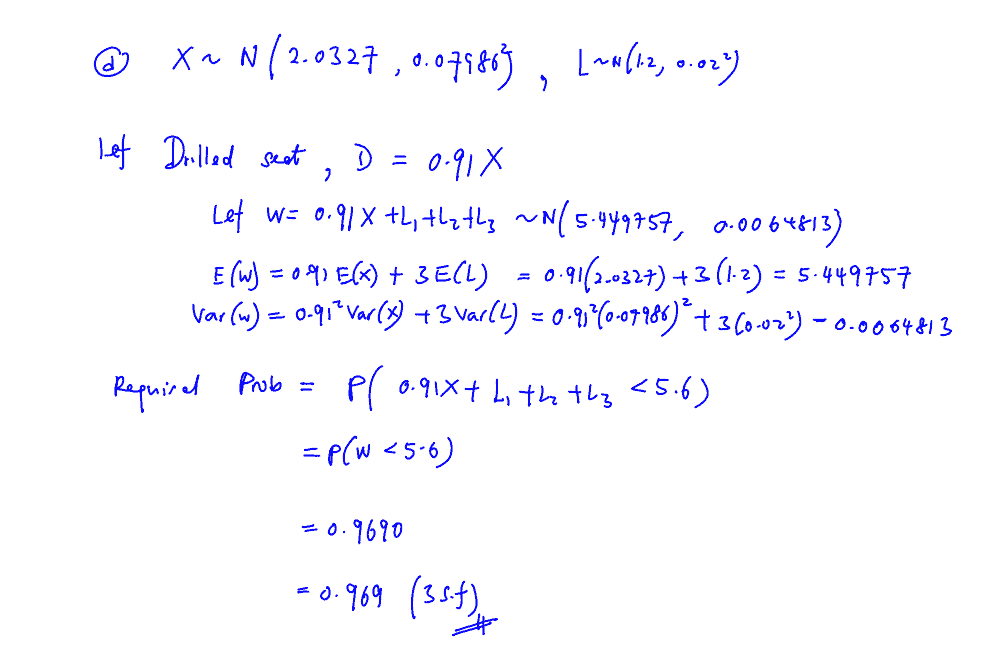
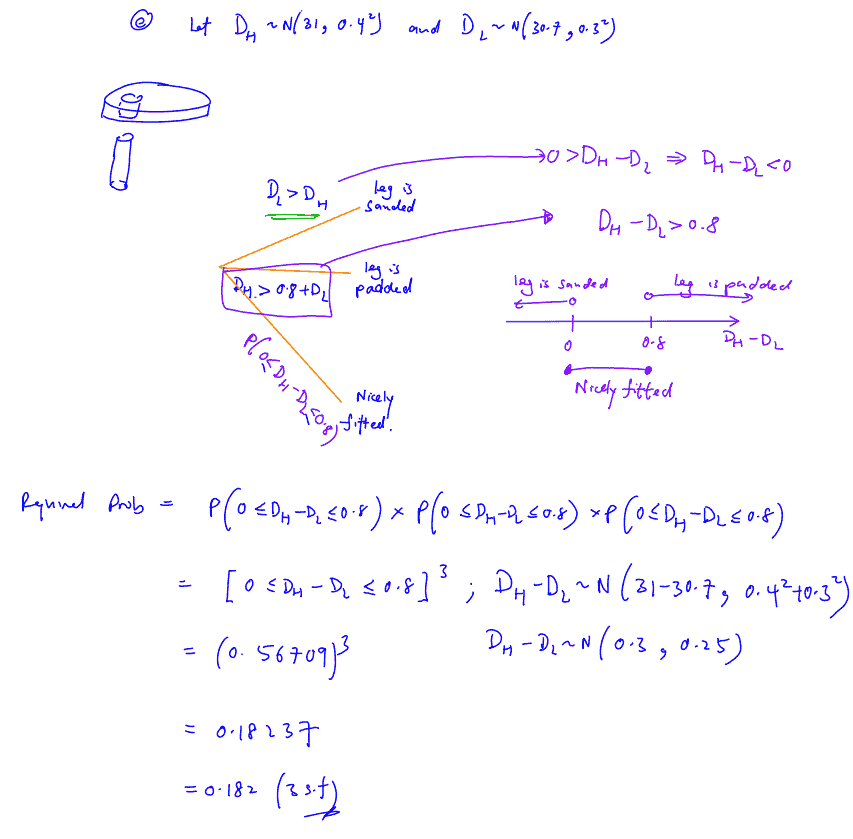
- (a)
- (b)
- (c)
- (d)
- (e)





Share with your friends!
